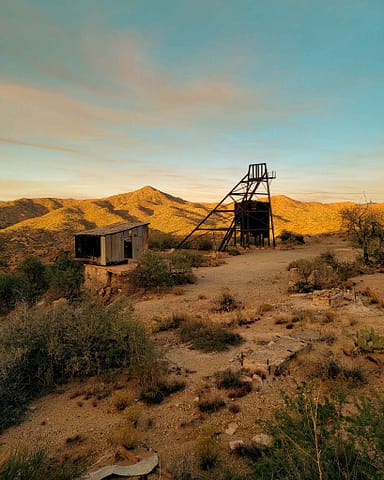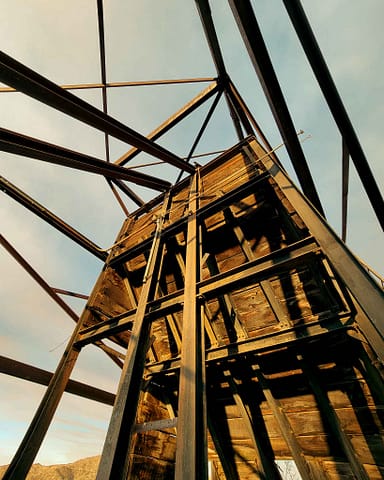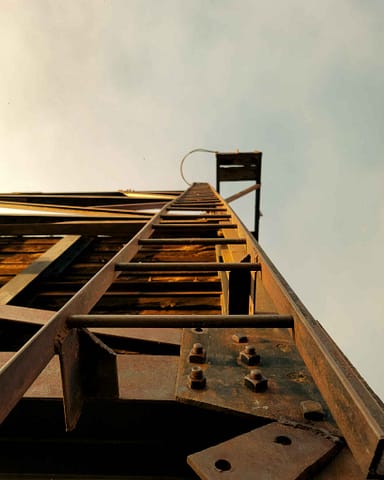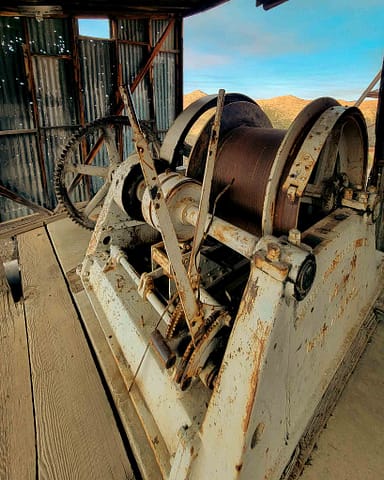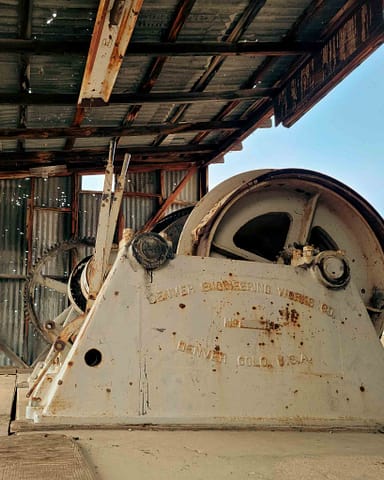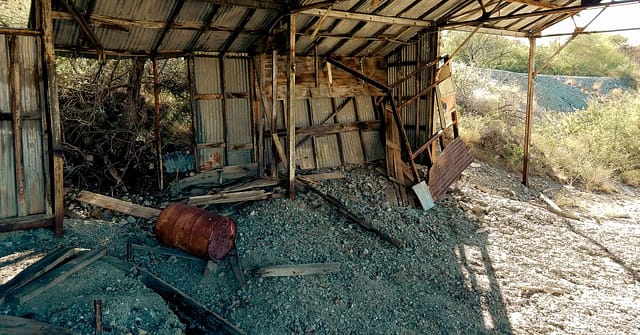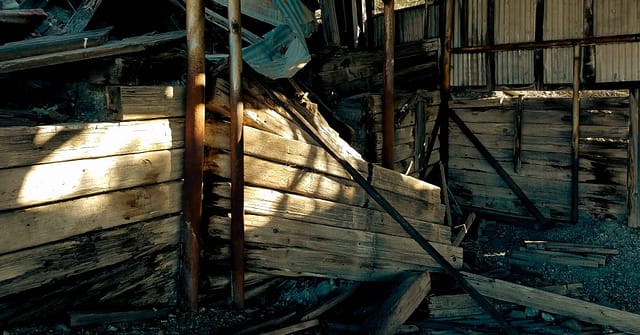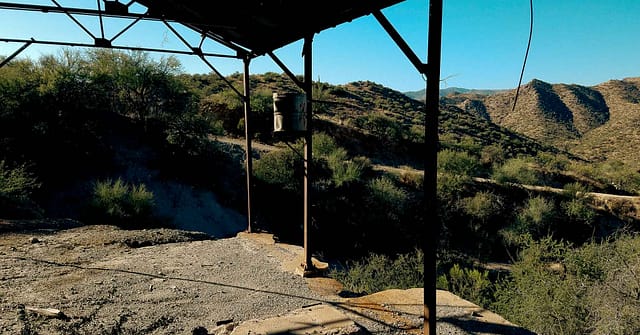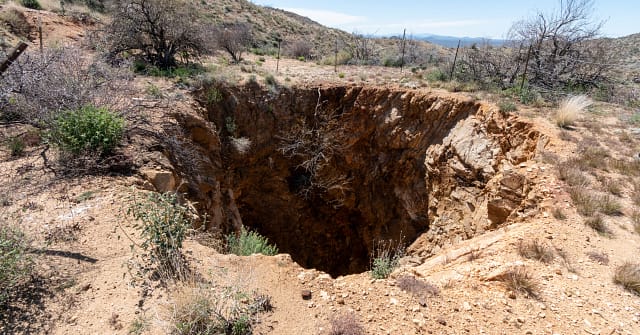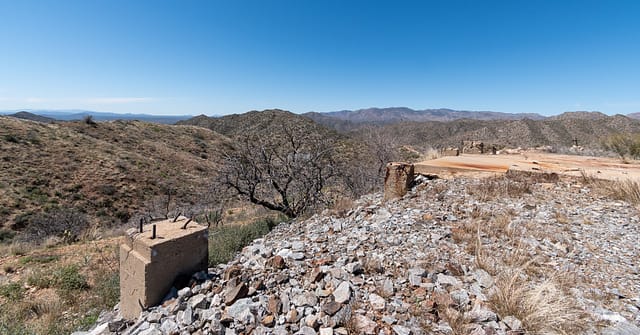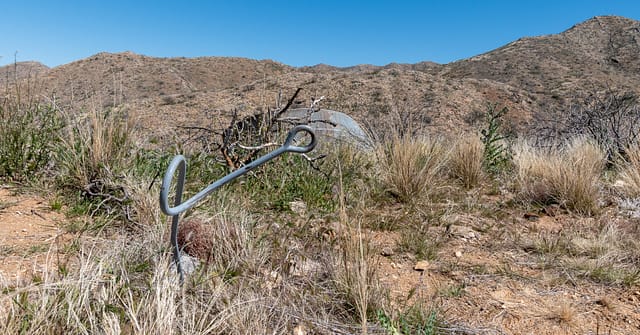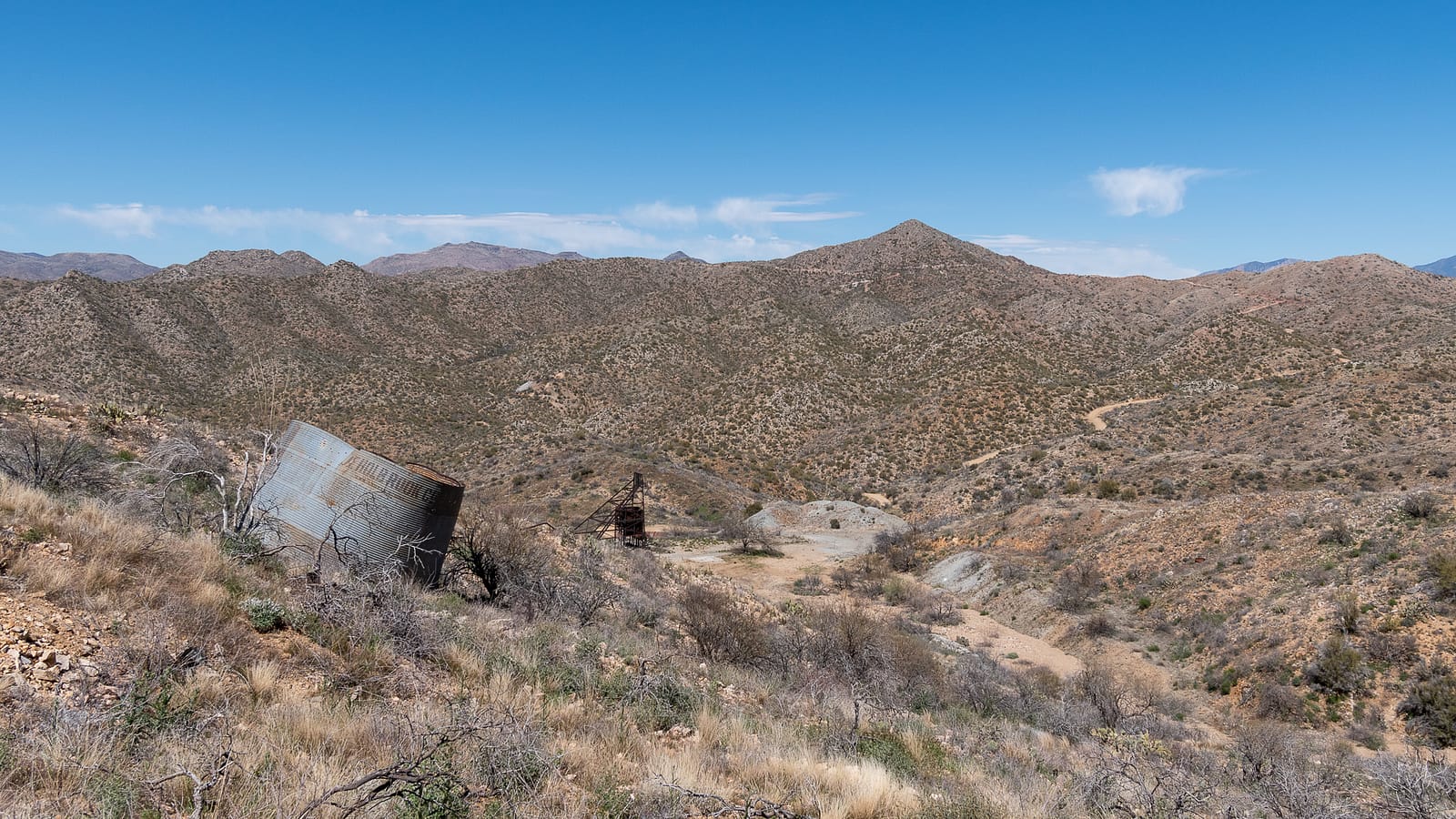
Monte Cristo Mine, Black Rock Mining District, Wickenburg Area, Yavapai County, AZ
Located in the area known as Constellation, the abandoned Monte Christo Mine is known for its well-preserved headframe and few remaining structures and machinery.
Early History

The early development and history of the mine were turbulent and unclear until the early 1900s when Ezra Thayer of Phoenix took claim in 1915. During his ownership, Thayer exhibited many fine native silver specimens to garner interest in the mine and raised $200,000 to develop the property. After improving the property, Ezra Thayer sold the mine to C.C. Julian in 1926, who merged several other claims, which came to be known as the Julian Merger Mines. Thayer refused to ship silver during his ownership but claimed several million ounces were blocked out. This bold claim would soon be tested out.
Under the ownership of CC. Julian, the mine operated successfully, but for only one year. Under considerable difficulty, C.C. Julian smelted a large slab of silver from ore produced. He went on to proudly exhibit it in a show in Los Angeles. Although 1927 was the last year of recorded production for the mine. Both Ezra Thayer and C.C. Julian had tricked investors into believing that Monte Cristo Mine was an untapped bonanza of massive proportions. Thayer and Julian showcased the high-grade ore to bring investment and attention from small surface pockets that had been worked out by this point. Unable to produce any more high-grade ore, the Julian outfit soon collapsed. However, this did not stop other mining interests from employing similar tactics and/or hoping to stick rich at the mine.
Late History
Since the collapse of the Julian Outfit, various mining interests have explored ore reserves and the mine’s production possibilities. Some of these mining interests have even made considerable repairs and improvements to the property in hopes of striking rich and enticing investments.

From the late 1960s into the 1970s, mining interests, including Southcan Mining Ltd. and Goldex, did just this. These mining interests explored potential ore reserves through diamond core drilling and sampling. In the mid-1970s, Goldex purchased a lease on the mine and constructed and placed the hoist and headframe. However, problems with flooding within the mineshaft caused Goldex to “temporarily” quit the property and operation in 1976. By 1980, visitors had reported no activity on the property. Besides some test drilling and sampling in the 80s, the property has sat deserted with no reported mining activity. The Monte Cristo now stands as a testament to mining entities looking to sway investors with promises of a great bonanza but never delivering on those promises.
For more information on the Monte Cristo Mine, check out the links below
- Mindat page https://www.mindat.org/loc-52108.html
- AZ Offroad https://azoffroad.net/monte-christo-mine
- Arizona Geological Society https://azgs.arizona.edu/photo/monte-cristo-silver-mine-yavapai-county-1912

